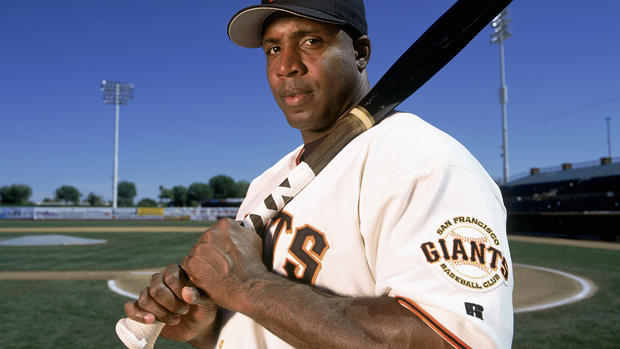Bonds trial cameras: Riveting TV you won't see
George Osterkamp is a CBS News producer in the San Francisco bureau
The perjury trial of baseball's home run king Barry Bonds now taking place in San Francisco is one of the most absorbing TV shows now running. Sadly, it is a television program you will never see.
This is closed circuit television coverage carrying pictures and sound from Judge Susan Illston's 19th floor courtroom down the hall to another, overflow courtroom, and also downstairs to a small press room on the ground floor of San Francisco's Federal building.
It is a remarkable trial. Bonds is charged not with taking steroids, but for allegedly lying about steroid use to a grand jury back in 2003. People in the courtroom-and those able to watch on TV have already seen a dogged investigator testify how he sifted through trash for a year from BALCO, a lab that was a source of steroids. They've also seen riveting testimony from Bonds' former mistress who faced harsh cross examination as she spoke of admissions by Bonds as well as mood and body changes in the man who holds the major league record for most home runs.
Barry Bonds: Through the Years
The TV coverage is innovative and complete. Three cameras focus on different parts of the courtroom, and all three images are displayed at once: one shows the judge, the second shows the witness and the third the opposing lawyers and Barry Bonds. The 3-way split screen gives TV viewers a better view than exists in the court-you see everyone at once. There is no editorial choice by a television director as he chooses one camera, then another. In this system, you ALWAYS see the judge, the witness and the adversaries.
The TV coverage is the brainchild of Buz Rico, Systems Manager for the U.S. District Court of Northern California. He came up with the three-camera concept last year to cover the challenge to Proposition 8, California's ban on same sex marriage, before Chief Judge Vaughn Walker.
Judge Walker was ready to make live coverage of the same sex marriage trial available in federal courthouses across the country - and to the nation at large that night on YouTube. These plans were scuttled by the U.S. Supreme Court in a ruling that restricted coverage to the inside of the Federal Building.
Rico explained to me in an interview that the cameras were inexpensive, and the system designed to be controlled by the judge. It could be broadcast live or tape delayed. But so far even with judicial control the courts have put wider coverage on hold. Of the millions of people who might have interest in baseball and steroids, fewer than 100 people inside the building get to see this creative and pioneering TV feed.
The 6th Amendment of the U.S. Constitution guarantees defendants "the right to a speedy and public trial." Why should the rest of us be denied a view of a public trial because we can't make it to the courthouse in San Francisco, especially now that technology has made viewing by a wider public so easy and economical?


